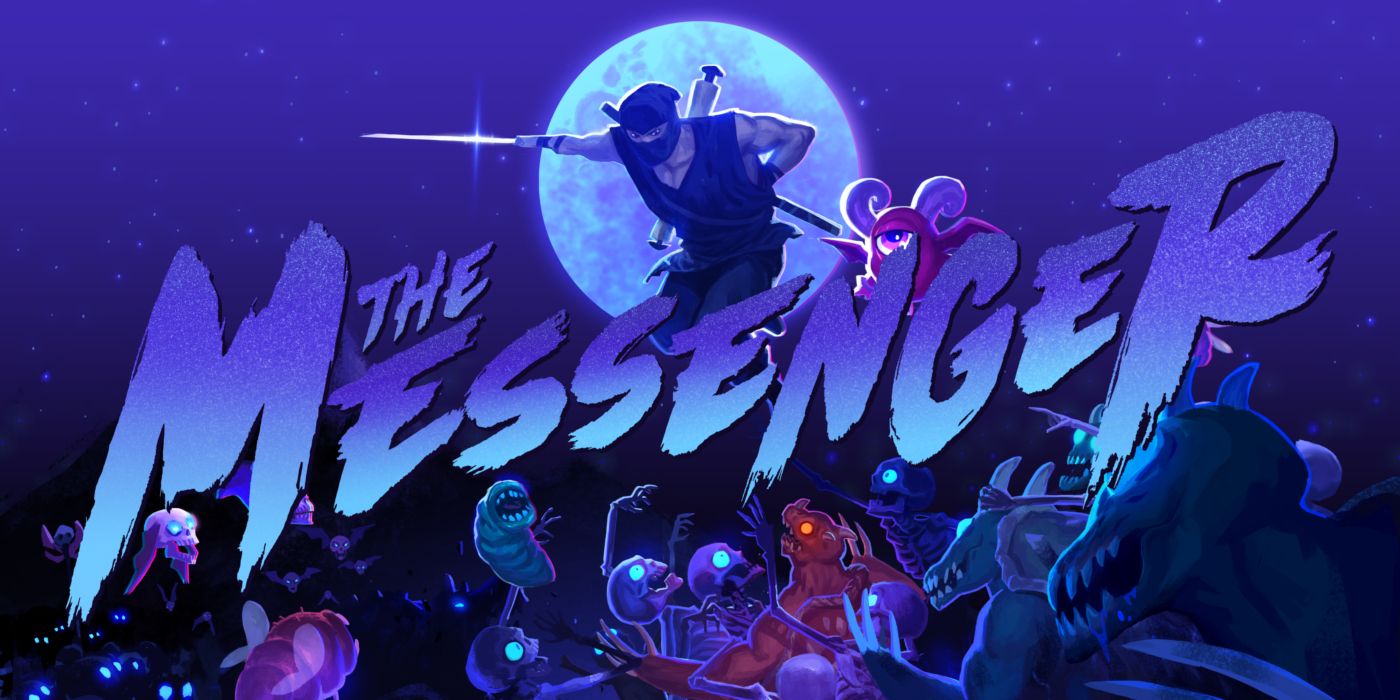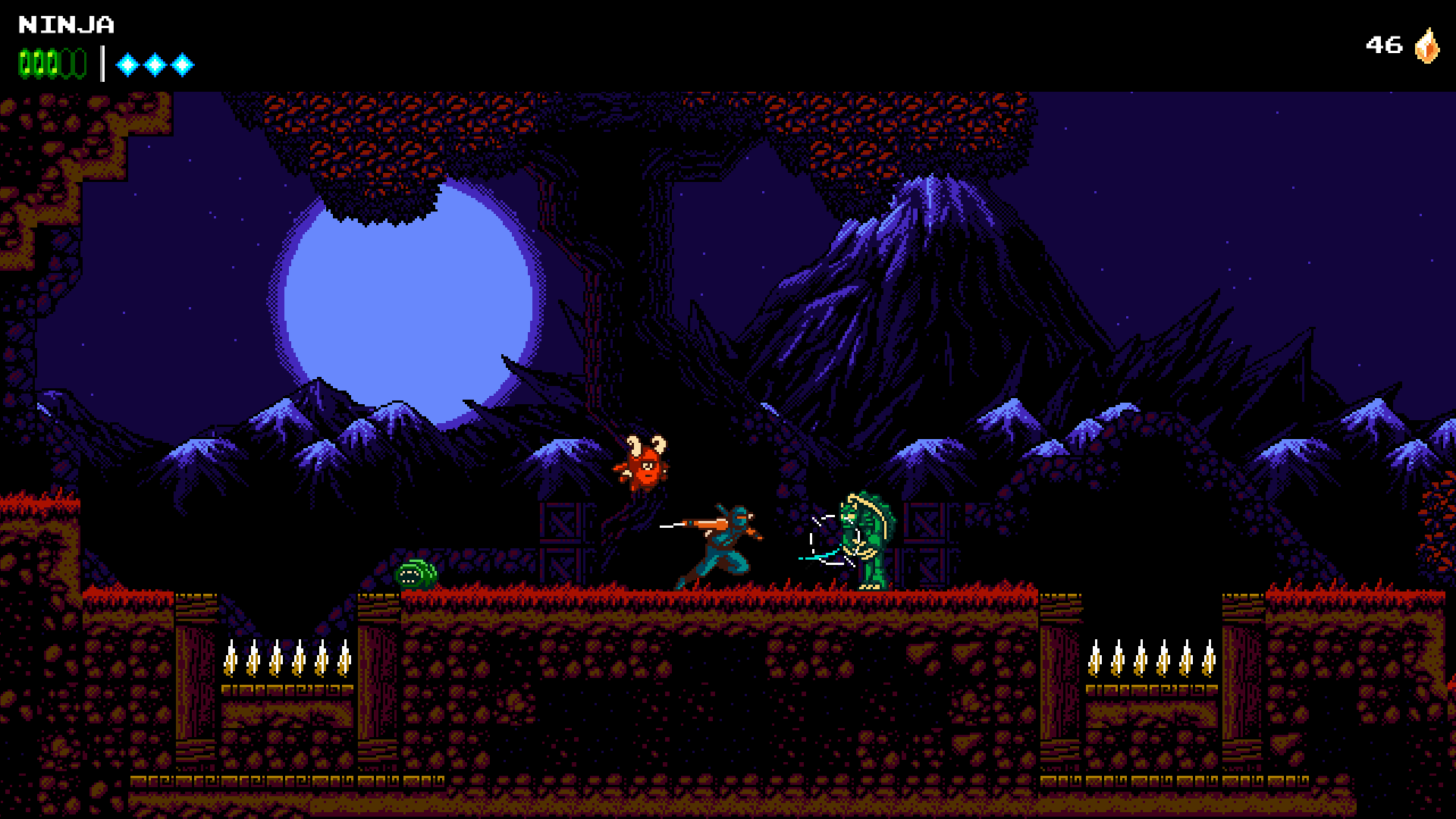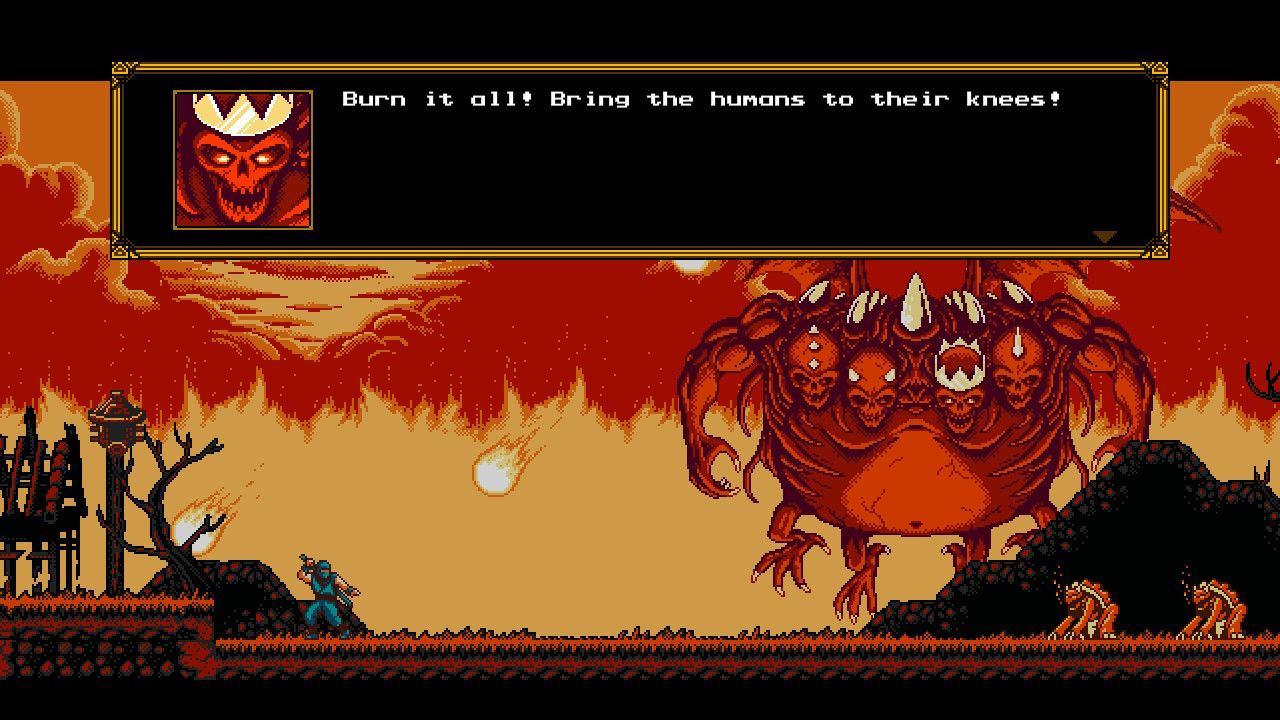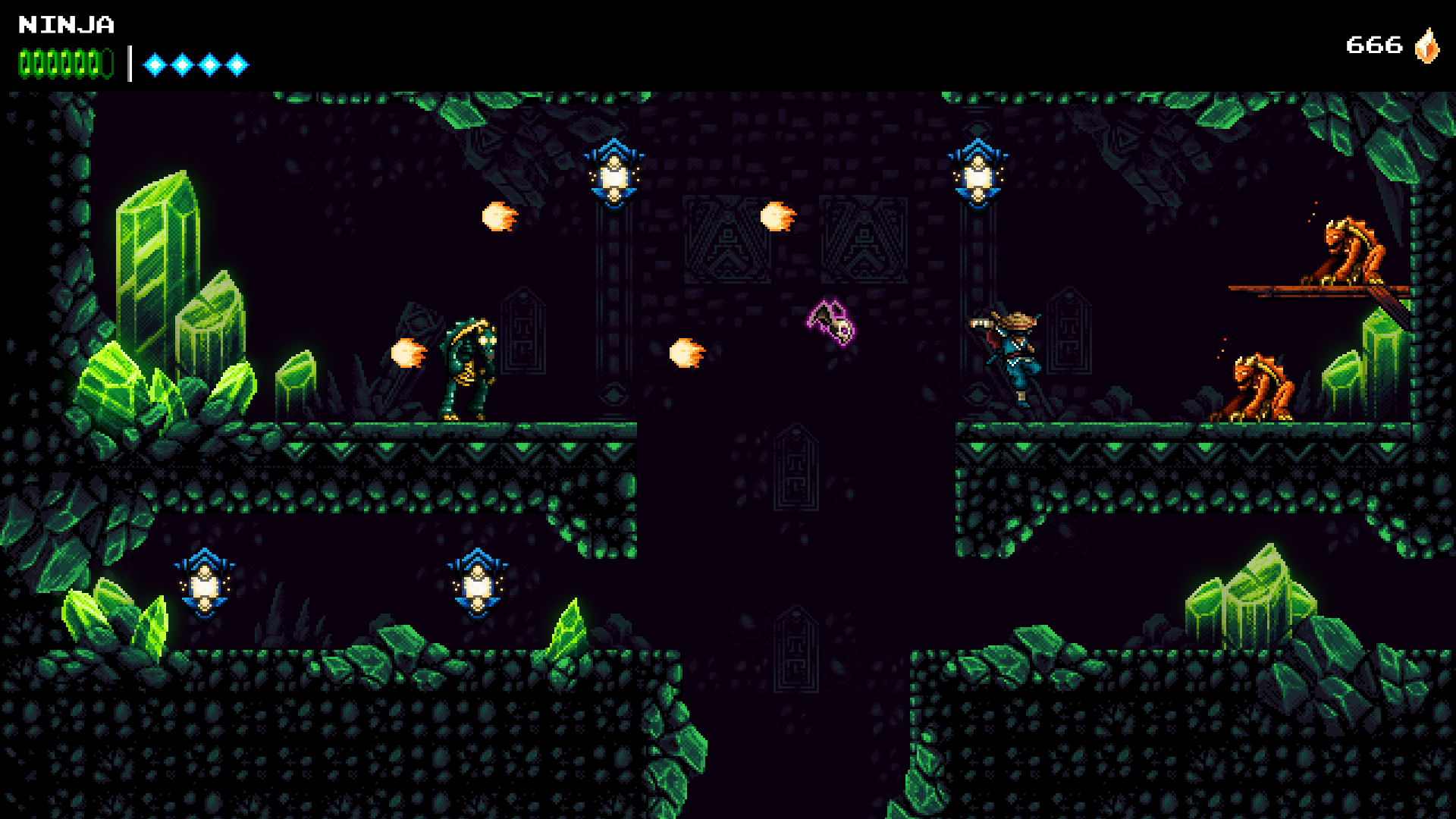The Golden Era of 8-bit gaming is an embarrassment of riches, and modern titles have duly plunged it for inspirational guidance, homage, and cheap grabs for nostalgia. Despite that, there are always certain classics whose graves stand relatively undisturbed, like the historic run of the Ninja Gaiden franchise on the original NES, a trilogy of tricky platformers which represents the jumping-off point for The Messenger, a hybrid 8- and 16-bit homage to Ryu Hayabusa, but resplendent with an immaculate sense of movement and an infectiously irreverent sense of humor.
The story is told in dialogue text and old-school "cinematics," and it's mostly high-concept silliness riffing on sacred prophecies and quests, but it strongly commits to the tone and makes for worthwhile reading. As a ninja in a demon-plagued world, the main character is tasked with bringing a scroll through a hazardous post-apocalyptic landscape to save his clan. Aided by mysterious sages and a sarcastic but well-meaning shopkeeper on the astral plane, the first few hours of the game take you through some predictable 8-bit environments (forest, caves, jungle, etc.), slashing demons, dodging spikes and pits of lava, and fighting end-of-level bosses.
Related: Brawlout Review - A Poor Pretender for the Smash Bros. Throne
The brightest jewel in The Messenger’s crown has to be its apparent mission to offer perfect character control. Its central platforming mechanic relies on a method called “cloudstepping,” which basically means that hitting an enemy, projectile, or anything vulnerable to your sword grants you a bonus mid-air jump. Most screens are set up to leverage this ability, allowing players to bound between bottomless pits, crushing walls, and candelabras. Combining this with a few limited ability upgrades, a glide technique, as well as a rope dart, you’ll eventually find yourself spending most of your time in the air dodging between enemies, hooks, and ledges; once cloudstepping clicks with you, you’ll wonder why a functional equivalent has barely appeared in any other 2D game.
The overall challenge manages to straddle that “just right” feeling, and The Messenger never reaches the hardcore limits of Super Meat Boy (or, for that matter, any of the original Ninja Gaiden games), but it’s hardly a cakewalk either, especially if taking time seeking out any secret rooms. Dying is a low-cost affair as well, with a cute fourth-wall-breaking demon named Quarble always saving you from the point of death, taking a small bounty of your collectible shards as payment, and sending you back to a checkpoint to start over.
There are a few genuine structural surprises too, with the early hours of the game presenting levels in sequence before culminating in a challenging crystal tower. Strangely, the game outright transforms at this point, with time portals that send the player to 16-bit variations of the levels and entirely new areas as well, all of which connect at a centralized hub. In avoidance of additional spoilers, just be aware that a few basic puzzles and riddles gate progression (all of which can be effectively trivialized by spending “time shards” at the shop for a map marker), and there’s still a good 6 or 7 additional hours of content from this milestone.
The quality of The Messenger’s visual and audio presentation is leaps beyond most any other “retraux” game, from the infectious soundtrack by Rainbowdragoneyes (which delightfully transforms when shifting between time periods) to the fluid animation frames of the main character, to the gorgeously detailed parallax background art. Hitting mobs with the sword or perfectly timing a rope dart always prompts a scratchy, satisfying sound effect, a form of nuanced feedback crucial to the platformer genre which comparable games have often fumbled. While the latter half of the game does require copious backtracking, it never comes off feeling like a chore, because traversing the traps and hazards again acts as its own reward.
If the game sags, it’s probably in its enemy selection; for instance, the same green, red, and blue demons will be seen in virtually every level. That limited roster doesn’t wreck the experience, though, and the non-boss enemies seem deliberately designed to be quickly-dispatched cannon fodder. This same aspect was present in the Ninja Gaiden games as well, which regarded enemies more as environmental hazards (like the ever-frustrating flying creatures designed to knock you off of ledges, who also make an appearance here) than formidable dangers on their own. The bosses are fun to take down but, aside from a few exceptions, they also tend to be rather easy.
New movement abilities are doled out at arbitrary points in the quest, which means that even though they meaningfully change your approach, you’re rarely given agency in shaping your character a certain way. The shopkeeper’s limited wares only amount to a few necessary upgrades and some nice-to-haves, and those aforementioned affordable hints. Past that, there’s nothing left to do with all the shards picked up, so expect to end the adventure with several thousand extra, even after Quarble’s pilfered his modest due.
These details never end up detracting from The Messenger’s intention, which is to provide hours of airtight platforming through beautifully constructed stages. The mid-game pivot isn’t its only surprise, and the game manages to engagee an unpredictable spirit all the way through to the end. It’s abundantly clear that the developers at Sabotage Studio wholly adore the platformer genre, and anyone who shares in that love will find The Messenger impossible to put down.
More: Hypergun Review: Skip the Simulation
The Messenger launches on PC and Nintendo Switch on August 30, 2018 and is priced at $19.99. Screen Rant was provided a copy on Nintendo Switch for purposes of review.




